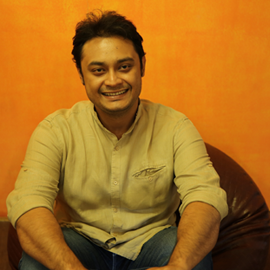One mass shooting every day: why the US must wake up & implement gun control

Updated (13 June): 50 people dead and 53 wounded after a gunmen opened fire at Pulse, an LGBTQ nightclub in Orlando, Florida, in the early hours of Sunday, 12 June.
Two people barged in and fired at the Inland Regional Centre in San Bernardino county, California, on 2 December, killing 14 people and injuring 21.
The perpetrators, identified as Syed Rizwan Farook and his wife Tashfeen Malik, were eventually killed in a gun battle with the police.
Farook worked at the Inland Regional Centre, and most of the victims were his coworkers and county employees, who were attending a holiday party.
Though no clear motive has been established yet, authorities hint that this was a case of religious extremism.
But whatever be the motive in this particular case, one cannot deny that gun violence is a common occurrence in the US these days, and has killed more people in the country than terror attacks in the last decade.
This was the 355th incident of mass shooting in the US in this calendar year, and the deadliest such incident since the Newtown school shootings in Connecticut in 2012.
Here are a few more statistics that highlight the growing menace of gun violence in the US.
- Number of mass shootings in the US in 2015. Of these, 62 shootings were in schools.
In 2014, 336 shootings took place. The year before that, the number was 363.
- This roughly translates to one mass shooting each day.
The number of people killed in mass shootings in 2014 was 462, and the number of injured persons was 1,312.
Disturbingly, gun killing rates for a few US cities is higher than those of many nations which are considered 'dangerous'.
- Washington DC has a higher gun-killing rate than Brazil; Houston more than Ecuador; Atlanta more than South Africa. The total US gun-killing rates are higher than Pakistan and Sudan.
- The estimated number of guns in civilian hands in the US. Among these, 40% sales had no 'background check'.
- The number of guns in the US is higher than the number of people residing in Pakistan, Afghanistan, Iraq and Syria combined.
Additionally, each year about 4.5 million guns are sold in the US. This excludes two million second-hand guns.
- Alarmingly, the average number of guns per owner increased from 4.1 in 1994 to 6.9 in 2004.
Though the US accounts for 5% of the world's population, it hosts 35-50% of the world's civilian guns.
- The number of gun killings reported in the US in 2015.
- One-fourth of these murder victims were aged below 17.
Gun homicides in the US are the second leading cause of death among the 15-24 age group. They are also the main cause of death among black Americans.
- However, the fight against gun violence is misdirected, according to a study published in American Journal of Public Health.
- The total estimated lifelong medical costs for gunshot injuries in the US.
- This equals the total value of the famous basketball franchise, Chicago Bulls.
Taxpayers bear almost half ($ 1.1 billion) the medical costs for gunshot injuries.
Gun violence has many sociological impacts. Apart from medical costs, the costs of the criminal justice system, money spent on security precautions like metal detectors, it also affects the quality of life due fear psychosis, according to Heeding God's Call, an organisation fighting to end gun violence.
- An individual has a 90% higher chance of committing homicide when there are guns at home, as per a study in the American Journal of Epidemiology.
- The 'violent madman' theory is entirely wrong. Mental illness is characterised by social isolation and withdrawal, which reduces the propensity towards violence. Patients with mental illness have a higher rate of being victims than others.
Substance abuse, child abuse and alcoholism increase the risk of violent crime.
- Clearly, mental illness has no causal relationship with gun crimes. The answer may be found in gun control.
- The rate by which the risk of dying by a gunshot reduced in Australia after strict gun control laws were enacted following after the infamous Port Arthur massacre in 1996.
- Mandatory gun buy-back was introduced and 650,000 guns were bought back. A range of weapons were banned.
A 2011 research by US economist Richard Florida found that states which had tighter gun laws had lesser gun deaths. However, the disclaimer is that correlation does not necessarily mean causation.
- The question is - are Americans in favour of gun control?
"In 2014, less than half of Americans, 47%, said they favour stricter laws covering the sale of firearms, similar to views found last year. But this percentage is significantly below the 58% recorded in 2012, after the school shooting in Newtown, Connecticut," said a Gallup survey.
- Number of shooting incidents that have occurred in the last 72 hours in the US. Of these, 28 were 'official' shootings, meaning weapons discharged by police personnel. The number also includes shots fired in the air.
87 people have been killed in these 248 shootings.
- American senators must note that effective gun regulations will save lives and limit gun culture - a deep psychological problem that is affecting the US.







![BJP's Kapil Mishra recreates Shankar Mahadevan’s ‘Breathless’ song to highlight Delhi pollution [WATCH] BJP's Kapil Mishra recreates Shankar Mahadevan’s ‘Breathless’ song to highlight Delhi pollution [WATCH]](https://images.catchnews.com/upload/2022/11/03/kapil-mishra_240884_300x172.png)

![Anupam Kher shares pictures of his toned body on 67th birthday [MUST SEE] Anupam Kher shares pictures of his toned body on 67th birthday [MUST SEE]](https://images.catchnews.com/upload/2022/03/07/Anupam_kher_231145_300x172.jpg)






